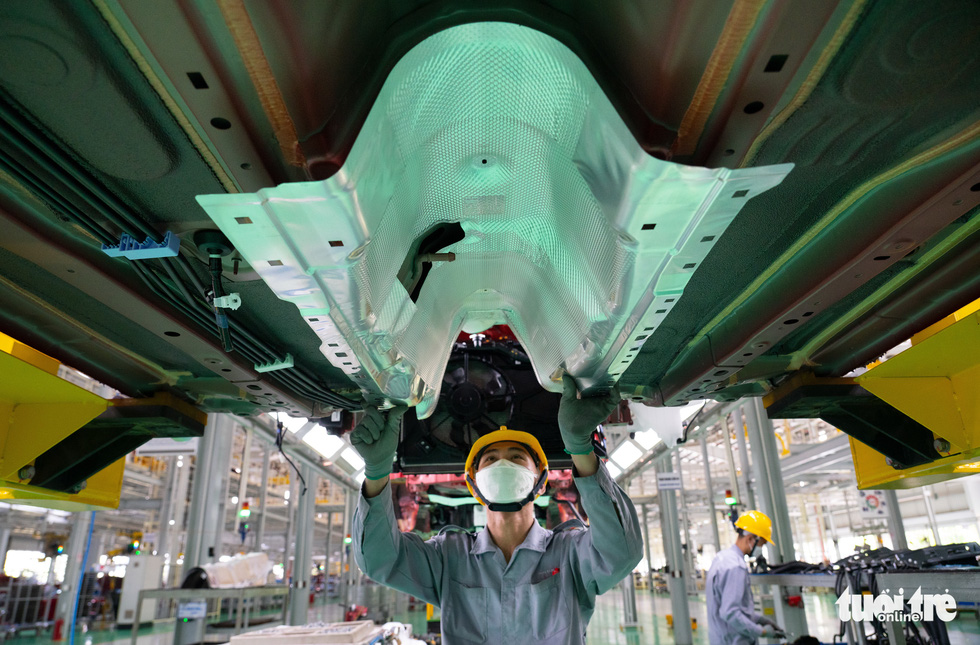Vietnam aims to achieve a gross domestic product (GDP) of US$7,500 per capita while meeting all the criteria of an industrialized country by 2030, as part of its aspiration to become a high-income developed country and one of the leading industrialized countries in Asia by 2045.
According to the latest data from the World Bank, Vietnam's GDP per capita stood at $3,694.02 in 2021, a 4.76 percent increase from 2020.
These ambitious targets are set forth in a resolution passed at the sixth session of the 13th Party Central Committee that wrapped up last month.
Under the resolution, which was signed by Party General Secretary Nguyen Phu Trong, Vietnam is set to become a developing country with modern industry, high average income per capita, and enhanced living standards by 2030.
Along with the $7,500 GDP per capita, the other specific targets for 2030 include the average GDP growth of seven percent per year at current prices, and the gross national income (GNI) of over $7,000 per capita at current prices.
The Southeast Asian nation will be built into a high-capacity and self-reliant industry that is highly adaptable and resilient, gradually mastering core and background technologies of the foundational, priority and spearhead industries within seven years, according to the resolution.
By that time, the nation's total factor productivity (TFP)’s contribution to economic growth will reach over 50 percent, and its global innovation index (GII) will be among those of the group of 40 leading countries in the world.
In the ASEAN area, Vietnam will be among the three countries leading the region in industrial competitiveness, with its industry share in GDP exceeding 30 percent and the rate of hi-tech industrial products in processing and fabrication sectors attaining more than 45 percent.
Meanwhile, the proportion of the service sector will account for over 50 percent of GDP, with tourism alone representing 14-15 percent of GDP.
In addition, the proportion of agricultural laborers in total social labor will be less than 20 percent, while the rate of trained workers with high qualifications will range from 35 to 40 percent.
Notably, the resolution also set an ambitious target to train over 80 percent of the working-age population in basic digital skills while the nation will have about 260 university students per ten thousand inhabitants by 2030.
The country will build up a number of large-scale, multinational domestic industrial corporations and enterprises with global competitiveness in fundamental industries, priority industries, and spearhead industries.
It will build and develop a number of domestic industrial clusters with large-scale and international competitiveness, and own a number of industrial and agricultural value chains.
The country also aims to build a self-reliant, self-strengthening, modern, and dual-use defense industry that meets both defense and military needs and directly participates in socio-economic development and serving the people.
The share of the digital economy is expected to make up 30 percent of GDP and the nation will complete the construction of a digital government, earning a place among the top 50 countries in the world and ranking third in the ASEAN region in terms of e-government and digital economy.
The resolution also sets an urbanization rate of over 50 percent, the environmental performance index (EPI) at over 55, and the human development index (HDI) more than 0.7 by 2030.
It requires building and perfecting institutions and policies to promote the country’s industrialization and modernization process, in which science and technology advances, especially achievements of the Fourth Industrial Revolution, should be applied broadly in order to create breakthroughs in productivity, quality, efficiency, and competitiveness of enterprises, industries and the whole economy.
As projected in the resolution’s long-term vision, Vietnam will strive to become a developed country with high income per capita in the world by 2045.
Like us on Facebook or follow us on Twitter to get the latest news about Vietnam!




















































